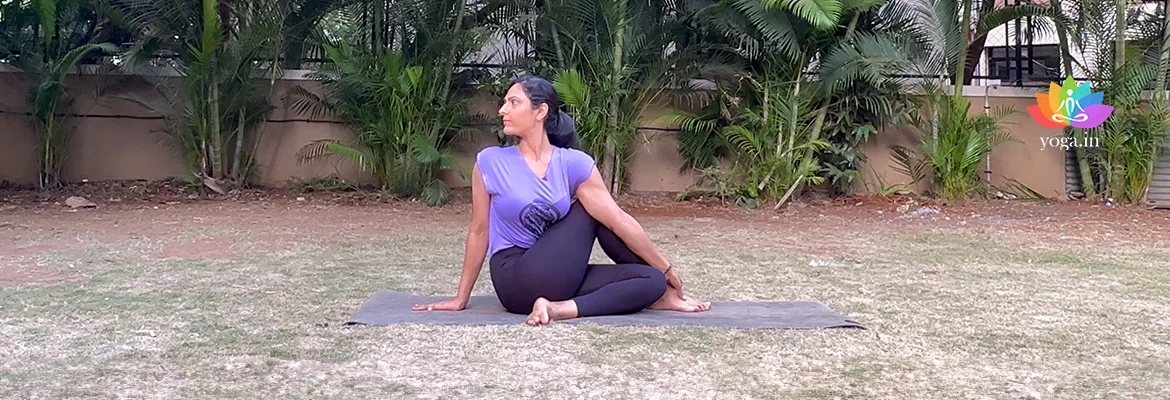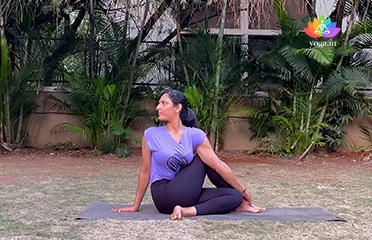Sit on the floor, with the legs stretched straight in front of you like in Dandasana.
Introduction to the Asana
The name Matsyendrasana is derived from the Sanskrit words Matsya (मत्स्य) meaning fish, Indra (इन्द्र) meaning king and Asana (आसन) meaning posture or seat.
Step to get in the pose
-
-
Bend the left knee and bring the left foot below the right thigh.
-
Lift the right leg a bit and place it close to the right hip tucking it deep below the right seated bone.
-
Now slowly bring the right leg with the knee bent and bring the right foot over the left thigh and place it close to the outside of the left hip on the floor.
-
Place the right knee close to your upper body.
-
Taking a deep breath and twisting the upper body towards the right, bring the right palm and place it on the floor just behind you with the twist.
-
The twist should be more from the inside of the right thigh and the palm placed close to your lower back behind you.
-
With the left arm, placing the outer elbow close to the outside of the right knee, grab the right foot. Pull your front torso and inner right thigh towards you.
-
After a complete exhalation, twist the torso more towards the right, and gradually place the right hand on the hips trying to hold the left side of the lower back.
-
The twisting of the body should be easy and slow, making sure the neck and the shoulders too are in alignment. Here the chest, shoulders and face should be in perfect alignment.
-
With every inhalation lift a little more through the sternum, pushing the right fingers deep into the left upper thighs to help twist deeper. And twist a little more with every exhalation.
-
Be sure to distribute evenly as this pose is all about maintaining the body balance. The entire length of the spine gets the twist evenly.
-
Make sure that both sit bones are on the floor ensuring the body is balanced well at the hips.
-
Stay in this pose for as long as you are comfortable.
-
Slowly release the pose and stretch the legs out in front of you and relax.
-
Repeat this pose again with the bending of the right leg and following the same process.
-
Complete the pose and stay as long as you are comfortable.
-
Slowly release from the pose and stretch your legs out in front of you and relax in Dandasana.
Common mistakes and pitfalls
-
Not keeping your Shoulder straight when doing the asana.
Benefits
-
Best for spinal health – Promotes flexibility and core strength.
-
Helps relieve problems of asthma and other respiratory diseases.
-
Reduces muscle cramps
-
Improves Kidney function.
Contraindication
-
Avoid in case of a slipped disc.
-
Avoid if suffering from peptic ulcers & hernia.
-
Avoid during pregnancy and menstruation.




